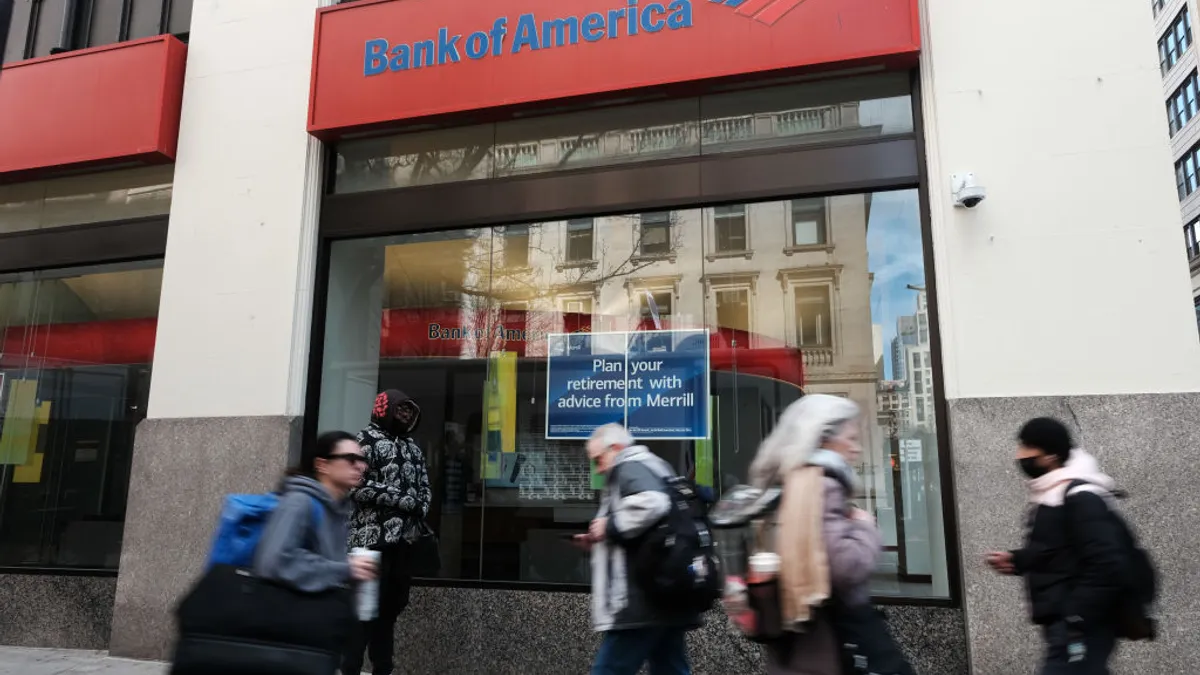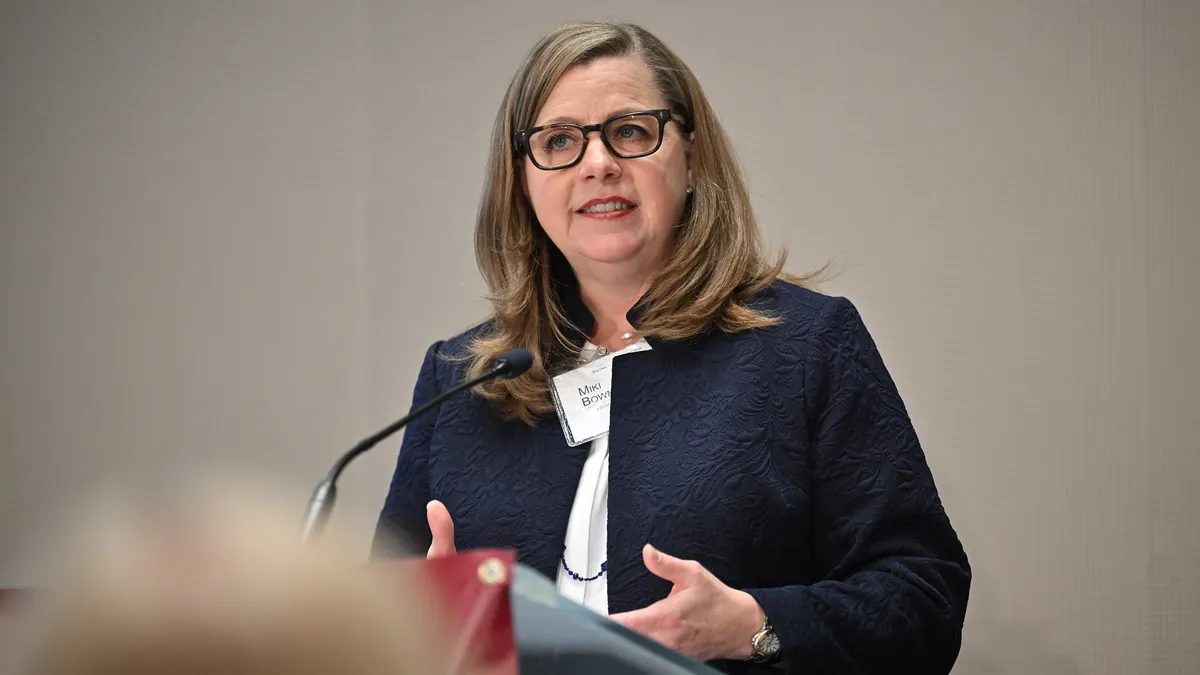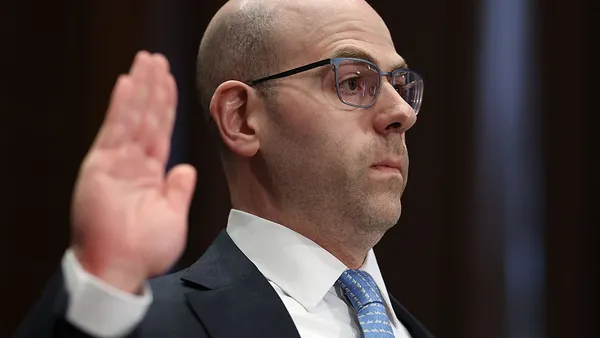Dive Brief:
- Bank of America has been ordered to pay the Federal Deposit Insurance Corp. $540.3 million in a yearslong lawsuit in which the bank regulator accused the lender of underpaying its deposit insurance obligations.
- In the order, signed March 31 and made public Monday, U.S. District Judge Loren L. AliKhan said “the law is not on [Bank of America’s] side,” and the lender is liable for unpaid assessments that are “lawfully payable.” The determined amount, however, fell short of the $1.12 billion the FDIC claimed the bank didn’t pay.
- “We are pleased the judge has ruled and have reserves reflecting the decision,” a spokesperson for the Charlotte, North Carolina-based lender said Tuesday. The spokesperson declined to comment on whether the bank might appeal the ruling. The FDIC declined to comment.
Dive Insight:
The decision marks the latest development in a yearslong legal fight between the bank and the regulatory agency over the unpaid premiums. The FDIC sued the bank in 2017, following Bank of America’s refusal to make FDIC deposit insurance payments in accordance with an agency rule dating to 2011.
The 2011 rule adjusted how banks report exposure to counterparty risk, which affects how they calculate their deposit insurance contributions. All FDIC-insured banks contribute to the Deposit Insurance Fund, which the regulator administers to insure customer deposits up to $250,000 in the event of a bank failure.
Rather than report counterparty exposures at the “consolidated entity level,” which the rule required, the second-largest U.S. lender reported counterparty exposures individually, which lowered the bank’s concentration measure and the overall amount it paid in deposit insurance assessments for a period of time, according to the order.
Bank of America had challenged the validity of the FDIC’s 2011 rule, saying it was unclear and the agency violated the Administrative Procedure Act in adopting the rule.
The FDIC contended the bank “made false or fraudulent statements about its counterparty exposures with the intent to evade its assessments,” preventing the agency from discovering the bank’s errors until the FDIC conducted a 2016 audit.
The bank “vehemently” denied intentions to evade, noting it repeatedly informed the FDIC of its counterparty exposures reporting, and the judge indicated she sided with the bank on that point. “Given [the bank’s] repeated disclosures about its reporting method, … the court is hard-pressed to understand how its actions indicate an intent to evade,” the order said.
Still, the judge backed the validity and clarity of the FDIC’s rule, and said the bank “should have been able to ‘identify[] with “ascertainable certainty,” the standards’ it was expected to apply.”
“The court cannot find that [Bank of America] lacked fair notice of what was required of it,” the judge wrote. The bank claimed it was confused about the rule’s meaning but never sought clarity from the agency, she noted.
The federal regulator sought $1.12 billion in deposit insurance assessments it accused the bank of failing to pay, and profits it claimed the bank earned in skirting required premiums. The bank was ordered to pay a portion of the unpaid assessments, but the judge declined to require the bank to pay any earnings.
The $540.3 million represented the bank’s underpaid assessments from the second quarter of 2013 to the fourth quarter of 2014, plus interest, the order said.
During the bank’s first-quarter earnings conference call Tuesday, Bank of America CFO Alastair Borthwick noted the bank’s quarterly litigation costs were higher “related to a recent decision in a long-running matter.”
BofA’s first-quarter non-interest expenses totaled $17.8 billion. That was a 6%, or $1 billion, quarter-over-quarter increase, driven in part by the increased litigation costs, according to an earnings presentation.
Borthwick also referenced the bank’s purchase of an $8 billion portfolio of residential mortgage loans, which he called high quality and said “allows good potential to expand relationships with customers beyond those mortgage loans.” The bank expects the loans to add about $100 million in net interest income annually, he said.
Borthwick didn’t name the seller, but Bank of America reportedly bought a residential mortgage portfolio TD was selling earlier this year.
As recession predictions increase amid tariff volatility and trade war concerns, Borthwick and CEO Brian Moynihan also sought to show that the bank’s credit risk profile is strong enough to withstand more challenging economic conditions, as it’s cultivated a more balanced, less risky loan portfolio.
“We’ve been working at that hard” to ensure that the bank can “serve our clients well and not have to be pulling back,” Moynihan said.













